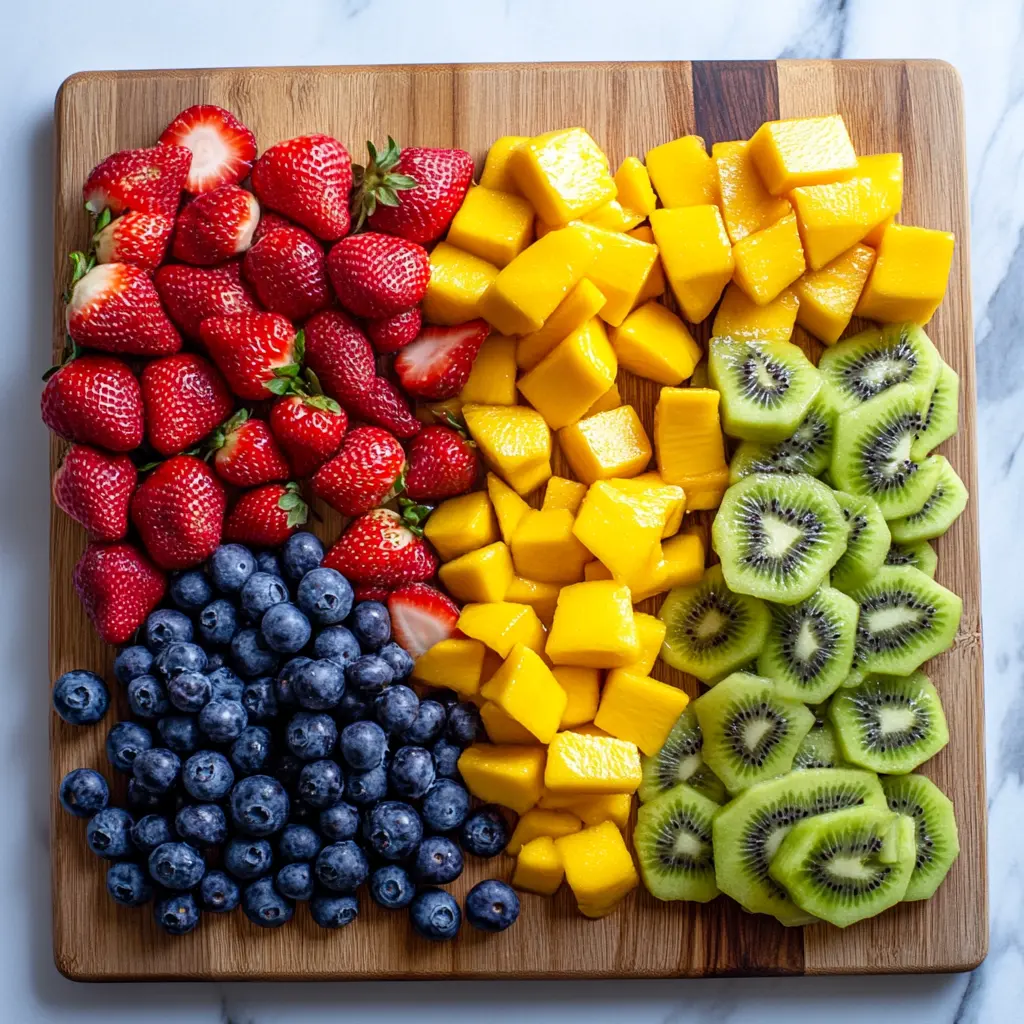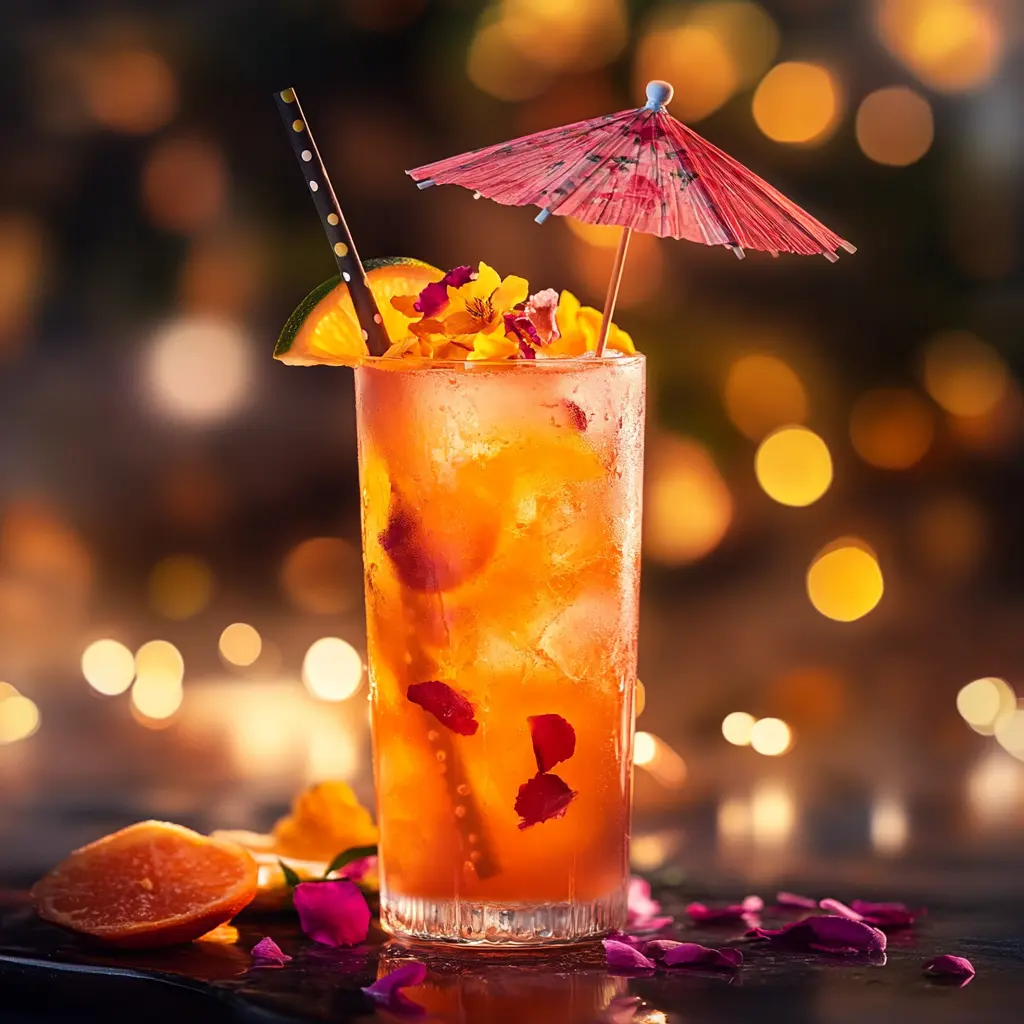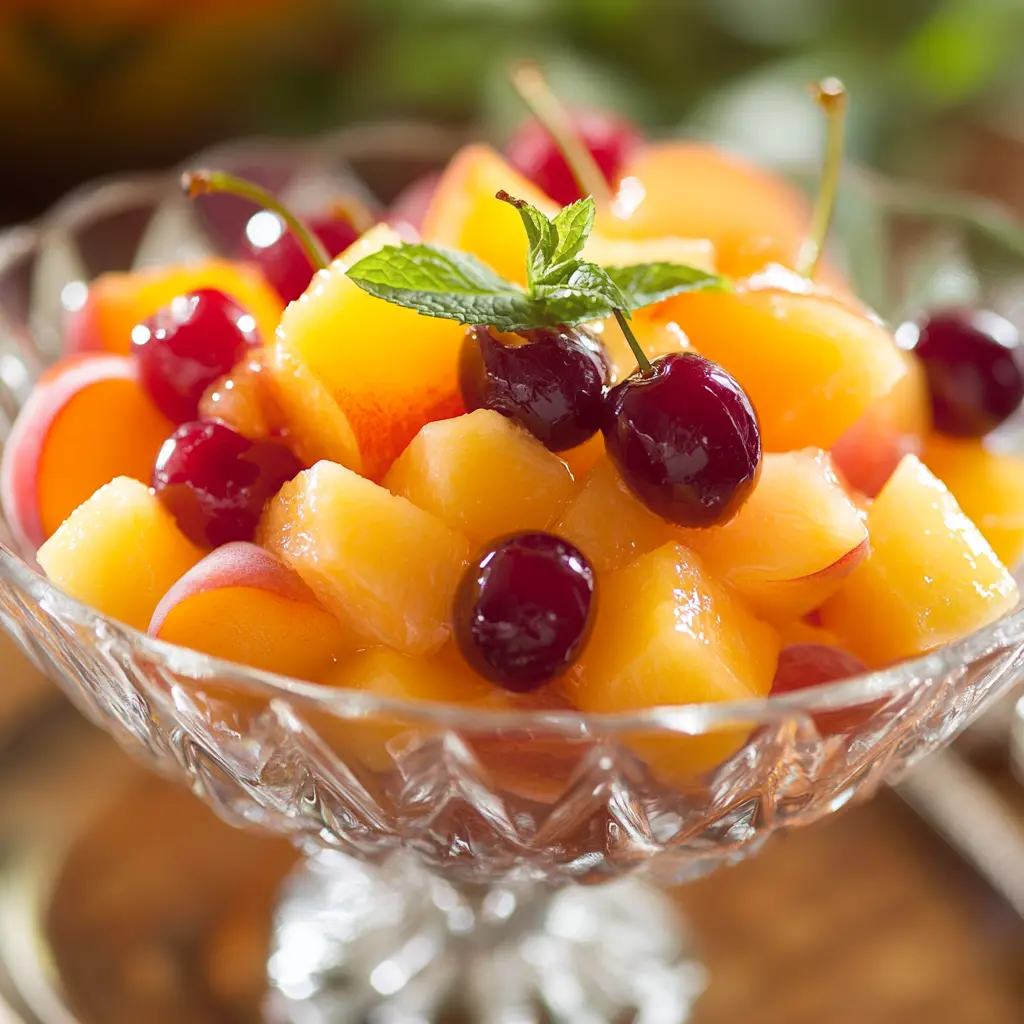Enjoy a sweet, vibrant, and nourishing fruit cocktail that offers endless variations and delightful flavors.
What is a Fruit Cocktail?
A fruit cocktail is a colorful blend of diced or sliced fruits served in a bowl or glass. It often includes a mix of tropical, citrus, and locally sourced produce. Fruit cocktail typically comes sweetened with juices or light syrups, forming a luscious and refreshing dessert. According to the U.S. Department of Agriculture (USDA), consuming a variety of fruits helps maintain a balanced diet. This sweet mixture, albeit simple, captivates the palate and boosts daily nutrient intake.
Additionally, fruit cocktail stands out as a convenient and nutritious snack option. Unlike complicated desserts that require complex preparation, this fruit-based dish offers an effortless way to consume essential vitamins and minerals. Moreover, experts at the Harvard T.H. Chan School of Public Health emphasize the importance of diverse fruit consumption for overall health. Fruit cocktail accordingly helps encourage variety. In fact, the Mayo Clinic’s Nutrition and Healthy Eating Guide identifies fruit as a core element in balanced dietary plans.
In the upcoming section, we will discover the intriguing history behind fruit cocktails and learn how this delightful combination differs from traditional fruit salads.
History and Origin of Fruit Cocktail
The origin of fruit cocktail traces back to early 20th-century America. Canned fruits rose in popularity, and manufacturers combined them into a single can. This new product was not only convenient but also appealing. Families could open a can and enjoy a tasty medley of fruits any time of the year. Initially, peaches, pears, grapes, cherries, and pineapples were the primary ingredients. Over time, more fruits entered the mix.
Before that era, fresh fruits were a luxury outside their growing season. Fruit cocktail changed that. It provided people with access to fruit flavors all year round, albeit in a preserved form. Early cookbook writers praised its convenience and flavor. They often recommended fruit cocktail as a dessert or garnish for cakes and puddings.
In the subsequent chapter, we will see the differences that set fruit cocktails apart from standard fruit salads.
The Difference Between Fruit Cocktail and Fruit Salads
At first glance, fruit cocktails and fruit salads look similar. Both contain a variety of fruits, chopped and ready to eat. However, fruit cocktail usually involves smaller pieces and often includes a syrup. Fruit salads, by contrast, commonly feature fresh fruits tossed together without added syrups. Additionally, fruit salads often rely on large, uniform chunks of fruit served in bowls, while fruit cocktails get served in glasses or cups with smaller pieces.
In the next installment, we will explore why adding fruit cocktail to your daily diet might be a smart decision.
Benefits of Including Fruit Cocktails in Your Diet
Many people search for ways to boost their nutrient intake. Fruit cocktail is a delicious way to achieve this goal. It not only improves your diet’s variety, but it also supports hydration, vitamins, and essential minerals. Besides, fruit cocktail brings color, taste, and texture to any meal plan.
In the following segment, we will detail the nutritional value and health benefits you can gain by adding fruit cocktail to your menu.
Nutritional Value of Fruit Cocktail
Fruit cocktail, especially when made fresh, offers an array of nutrients. It provides vitamins C and A, fiber, and potassium. Different fruits yield different benefits. For example, pineapples supply bromelain, while grapes offer antioxidants. Comparatively, peaches add beta-carotene, and cherries provide anthocyanins. Together, these fruits create a synergy of health benefits.
Although canned versions may contain added sugars, you can choose those packed in water or natural juice. Such options help reduce sugar intake. Additionally, serving fruit cocktail with fresh mint or a splash of citrus juice can enhance flavor without increasing calories.
In the next phase, let’s examine how hydration and vitamins factor into the choice of a fruit cocktail.
Boosting Hydration and Vitamin Intake
Fruits, especially melons and citrus, contain high water content. Accordingly, eating a fruit cocktail helps maintain adequate hydration. This may prove helpful during hot summer months. Also, fruits supply vitamins like C and E, as well as minerals and antioxidants. Indeed, regular fruit consumption can improve skin health, enhance immunity, and support digestion.
Advancing to the following area, we will explore some common types of fruit cocktails, both canned and fresh.
Types of Fruit Cocktails
When it comes to fruit cocktails, you can find various types based on seasonal availability, preparation methods, and flavors. Though many people think of the classic canned version, fresh options are abundant.
In the next division, let’s break down the difference between canned and fresh fruit cocktails.
Canned Fruit Cocktail
Canned fruit cocktails have a long shelf life and are convenient. They save time on washing, peeling, and cutting. Although they occasionally contain added sugars, you can opt for “no sugar added” or “light syrup” varieties. These versions make it easier to control your sugar intake. Moreover, canned fruits are available year-round, ensuring you never run out of options.
In the next subsection, we’ll look at fresh fruit cocktails and their unique advantages.
Fresh Fruit Cocktails
Fresh fruit cocktails feature recently harvested produce. They taste crisp, juicy, and vibrant. Compared to canned, fresh versions let you control sweetness and quality. You can add locally sourced seasonal fruits to enjoy peak flavor and nutritional value. Additionally, fresh fruit cocktails allow for infinite customization, which means you can experiment with different textures, colors, and tastes.
Moving to the next part, we will delve into the art of making a perfect fruit cocktail at home.
How to Choose the Right Fruits
Selecting the right fruits is crucial. Since the success of a fruit cocktail depends on freshness and flavor, choosing top-quality produce matters. Always look for ripe, fragrant fruits free from blemishes. Additionally, consider color, taste, and texture to ensure a balanced mix.

Seasonal Fruits for the Best Flavor
Seasonal fruits generally taste better and cost less. For instance, strawberries and peaches thrive in summer, while citrus and pomegranates flourish in winter. By using seasonal produce, you gain the fullest flavor profile. This approach ensures the fruit cocktail tastes richer and fresher.
Combining Sweet, Tart, and Juicy Fruits
A well-rounded fruit cocktail balances flavors. Add sweet fruits like ripe mangoes or peaches to offset tart berries or kiwi. Include juicy options like grapes or watermelon to improve texture. Alternatively, add melon or papaya for creamy sweetness and gentle fragrance. This harmony of flavors makes the fruit cocktail more appealing.
Transitioning to the subsequent portion, let’s move on to the practical steps of preparing a fresh fruit cocktail.
Step-by-Step Guide to Preparing a Fresh Fruit Cocktail
Preparing a fresh fruit cocktail is straightforward, and you can do it at home with minimal effort. It only requires some basic tools, fresh produce, and a bit of creativity.
In the next subsection, we’ll start by learning proper washing and prepping methods.
Washing and Preparing Fruits Properly
Always wash fruits under cool running water. Use a gentle brush on firm-skinned fruits. This helps remove dirt and potential residues. Afterward, pat them dry to prevent extra moisture. Before cutting, remove inedible parts like stems or seeds. Also, peel fruits that require it, but remember some nutrient-rich skins are edible.
In the succeeding section, let’s learn about cutting techniques for a visually pleasing presentation.
Cutting Techniques for a Perfect Presentation
Cut fruits into small, uniform pieces. Uniformity ensures balanced flavors in every spoonful. For grapes or cherries, halve them. For peaches or mangoes, dice them into equal cubes. Orange segments work well as wedges or small pieces. By cutting carefully and uniformly, the fruit cocktail looks inviting.
In the next phase, we explore how to enhance the flavor of your fruit cocktail beyond the basics.
Enhancing Flavor in Fruit Cocktail
Although fresh fruit tastes fantastic on its own, certain additions can further elevate flavor. For example, adding a splash of freshly squeezed orange juice or a drizzle of honey can enrich sweetness. Moreover, consider infusing subtle spices or herbs to deepen complexity.
In the next subsection, let’s examine the role of fresh juices and syrups.
Using Fresh Juices and Syrups
Adding fresh juices, e.g., lime or lemon, can brighten flavors. A small amount of orange or pineapple juice adds sweetness and tang. Consider creating a light syrup from sugar and water. Simmer it with vanilla bean for extra aroma. Instead of refined sugar, choose honey or agave syrup for natural sweetness.
In the ensuing segment, we explore how herbs and spices enhance taste.
Adding Spices or Herbs like Mint or Cinnamon
Fresh mint leaves offer a cool, refreshing note. Simply tear a few leaves and toss them into the mixture. Cinnamon sticks or a pinch of ground cinnamon add warmth, especially with apple or pear slices. Basil pairs well with berries. Rosemary complements citrus. Experiment to find your favorite combinations.
In the next subsection, we’ll see creative ways to serve and present fruit cocktails to impress guests.
Creative Ways to Serve Fruit Cocktail
Presentation matters. A fruit cocktail presented in an elegant glass or garnished with edible flowers looks more appealing. Additionally, layering fruits by color forms a rainbow-like pattern, making the dish visually stunning.
In the ensuing segment, we delve into the use of elegant glassware.
Using Elegant Glassware for Presentation

Consider serving fruit cocktails in martini glasses, parfait cups, or crystal bowls. Tall, slender glasses highlight colorful layers. Short, wide bowls allow guests to appreciate all elements. The chosen vessel should complement the fruit’s hues. Glassware adds sophistication and makes the dish appear like a gourmet treat.
In the subsequent chapter, let’s learn about decorating with edible flowers and garnishes.
Decorating with Edible Flowers and Garnishes
Edible flowers such as nasturtiums or pansies add color and flair. Garnish with a mint sprig, lemon peel twist, or a berry skewer. Small touches create a memorable presentation. Avoid overpowering the fruit with too many extras. Instead, select one or two garnishes to maintain elegance.
On to the following discussion, we will explore customizing fruit cocktails for various occasions.
Customizing Fruit Cocktail for Different Occasions
Fruit cocktail fits any event. During children’s parties, a non-alcoholic version with bright colors works well. For dinner parties, consider sparkling wine. For health enthusiasts, focus on nutrient-rich fruits.
In the next subsection, we’ll explore alcoholic variations suitable for parties.
Alcoholic Variations for Parties
By adding a splash of champagne, prosecco, or sparkling wine, you create a fruit cocktail mimosa. Similarly, a splash of rum or vodka can transform it into a festive punch. You can also use sweet liqueurs like elderflower or Cointreau. Serve alcoholic fruit cocktails chilled, and add a fresh mint garnish.
In the ensuing segment, consider healthy options for kids and fitness fans.
Healthy Options for Kids and Fitness Enthusiasts
Children love bright colors and sweet flavors. Therefore, focus on vibrant berries and melon cubes. For a healthier twist, add chia seeds or plain yogurt for protein and fiber. Similarly, for fitness enthusiasts, consider adding antioxidant-rich berries, kiwi, and pineapple. Skip the syrup and use plain water or coconut water to keep it light and hydrating.
In the next division, we’ll discuss how to store and preserve your fruit cocktail for future enjoyment.
Storage and Preservation Tips
Storing fruit cocktails correctly ensures they remain fresh and flavorful. Always refrigerate leftovers. Although fresh fruit is best enjoyed immediately, proper storage can prolong shelf life. Additionally, choose airtight containers to maintain moisture and prevent flavors from mingling with other foods.
In the next subsection, let’s learn strategies for keeping fruits fresh longer.
Keeping Fruits Fresh for Longer
To keep cut fruits fresh, squeeze a bit of lemon juice over them. The acid reduces browning. Store the prepared fruit cocktail in a sealed container. Keep it in the refrigerator for up to two days. Moreover, don’t mix very soft fruits like bananas until right before serving. This way, they retain their texture.
In the subsequent portion, learn how to properly store canned fruit cocktails.
How to Store Canned Fruit Cocktails Properly
Unopened canned fruit cocktails last for months, sometimes years, in a cool pantry. Once opened, transfer leftovers to a sealed container and refrigerate. Consume them within a few days. Avoid storing metal cans in the fridge, as metal can alter the flavor. Instead, opt for a glass or plastic container.
Proceeding to the next chapter, let’s now look at frequently asked questions that people have about fruit cocktails.
Frequently Asked Questions (FAQs)
What is a fruit cocktail made of?
A fruit cocktail typically consists of diced fruits mixed together in light syrup or fruit juice. Classic options include peaches, pears, grapes, pineapples, and cherries. You can also add seasonal and exotic fruits for variety. The key is selecting ripe, flavorful fruits. This creates a vibrant and nourishing blend that delights the taste buds.
What are the 5 fruits in fruit cocktail?
The classic canned fruit cocktail blend usually contains five main fruits: diced peaches, diced pears, grapes, pineapple chunks, and halved cherries. These offer a balanced combination of sweetness, tartness, and texture. However, fresh variations can include strawberries, kiwi, mango, or papaya. This ensures flavor variety and dietary flexibility.
Does fruit cocktail contain alcohol?
Most traditional fruit cocktails do not contain alcohol. They are simply mixtures of fruits in syrup or juice. However, you can easily create alcoholic versions by adding wine, liqueur, or spirits. Sparkling wines like prosecco or a splash of rum transform the dish into a boozy dessert suitable for adults.
Is eating fruit cocktail healthy?
Eating fruit cocktail can be healthy if you choose low-sugar versions or make it fresh. Fresh fruit provides vitamins, fiber, and hydration. Avoiding heavy syrups and opting for natural juice reduces added sugar intake. Likewise, choosing nutrient-dense fruits like berries or kiwi can make your fruit cocktail more healthful. Always balance it with a well-rounded diet.
In the next subsection, we will discuss internal linking opportunities to help readers find related recipes or guides from our website’s sitemap.
